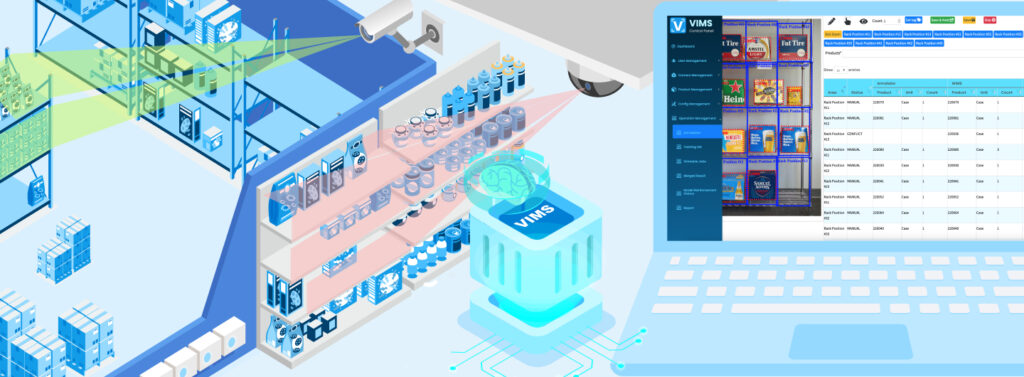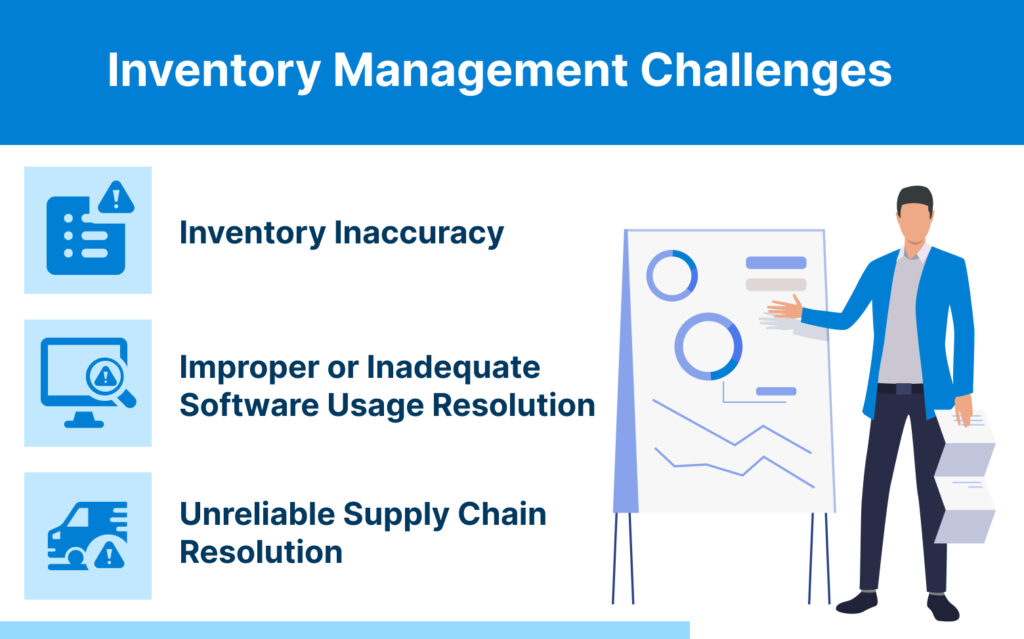With the state of the world today and the many supply chain problems we are currently experiencing, inventory management has never been more important.

What is Inventory Management?
Inventory management, a strategic element of the supply chain, refers to the tracking of inventory from manufacturers to warehouses and then to a point of sale. The goal of inventory management is to have the right products in the right place at the right time and it is where all elements of the supply chain converge.
How Computer Vision Works?
Computer vision works the same way as human vision. Just as humans must be trained to identify certain objects and patterns, so do computers. Computer vision trains machines to perform certain functions, and once trained, can perform these task much more quickly and reliably than humans.
Inventory Management Challenges

Different concerns loom large in the world of inventory management. Different industries face varied struggles, however, the following three concerns are faced by every industry managing inventory either in a warehouse or retail environment.
- Inventory Inaccuracy
Using paper, Excel, or any manual process to track inventory and you are inviting mistakes. With manual processes, mistakes are inevitable, and mistakes cost money. Additionally, manual inventory management does not allow for real-time information leading to inaccurate inventory counts as the inventory numbers may be very different at a cycle count at 8 am and a cycle count at 7 pm. These inaccuracies can lead to excess inventory or worse, inadequate inventory. Either way, this situation is going to result in unhappy and/or lost customers. Conversely, an automated system enables accurate tracking of your inventory in real-time. Automation eliminates the human error factor and takes the uncertainty out of manual inventory tracking.
2. Improper or Inadequate Software Usage Resolution
For the companies that understand the importance of automating, the next challenge they may come across is finding reliable software systems that are easy to integrate and do cost a fortune. However, finding and implementing an automation software is only the first step in automation success. Using the software to its fullest ability and utilizing all of the features and functionality the software provides to help run the organisation function more efficiently is key. Unfortunately, many companies do not do that. They invest in the software which is prevalent in the market and popular among peers but fail to see its benefits to their inventory environment. This results in companies investing in functionalities they do not need. To ensure you are getting the most out of your automation investment, be sure to spend some time in studying whether it’s the best fit for your needs.
3. Unreliable Supply Chain Resolution
Unreliable suppliers or uncertain supply chain is often out of your control. You may have a supplier that consistently misses their scheduled delivery date or that occasionally delivers wrong orders. While you can change suppliers, or alter your supply chain operation, you cannot control everything. One way to overcome this challenge is by monitoring supplier activity. For instance, the vision based inventory management system by TEMPO Process Automation tracks the inbound receipt of an item and include pertinent information such as ordered by date versus actual receipt date, the quantity of items delivered and quantity of items ordered, as well as the quality of items received. You can track these metrics over time and decide if there is a true problem, you may need to get a new supplier or make some other changes to have a reliable supply chain in place.
Inventory management is a complex process that encompasses many challenges. While many of these challenges may be out of your control (e.g., bad suppliers, a bad crop, weather, etc.), there are some steps you can take to help mitigate problems and resolve common challenges.
How computer vision can help
An ideal inventory management system (IMS) is about retail supply meeting customer demand without tying up too much stock that could go to waste in warehouses, or conversely, running out of stock. To say that artificial intelligence is part of our daily lives and logistics is obvious. It is also evident that technology is an ally to further improve all supply chain processes. AI opens an infinite number of scenarios to explore and develop. Most companies have opted for automation to support their development. Some benefits offered by computer vision across retail and warehouse environment include:
- In OSA (on-shelf availability) tracking, computer vision and ML challenge the status quo 8% OOS rate by monitoring and presenting opportunities through inventory visibility at any point in time.
- With computer vision, the sorting process is relatively easy to automate, particularly in warehouses, where the items are usually captured within a similar setting. Because of that, it’s not that hard to train the algorithm to deliver accurate results. All the computer needs to do is perform a simple classification task. The scanned image of each product gets an attributed class; on this basis, the machine makes an automated decision to place it in a particular zone or send it elsewhere.
- In terms of inspection, computer vision is a game-changer for logistics companies. Instead of verifying each parcel manually, they can let the machines do the job and focus on more demanding, higher-value tasks. Trained with depictions of flawless products, the AI models quickly detect any defect or anomaly. Based on the output, the computer vision-powered system makes an autonomous decision to redirect the item for manual inspection. Such a solution offloads the employees while helping the company maintain the highest customer satisfaction rates.
However, the latest advances in AI show that companies need to go further and make better use of the potential of machine intelligence if they want to differentiate themselves from their competitors.
Examples of businesses that integrate computer vision into their workflow
- Unilever: The consumer goods company also uses computer vision to audit stores. It sent a crowd-based workforce to a number of stores selling its goods to grab pictures of store shelves. The pictures were then processed by a computer vision-enabled platform. The goal was to provide its managers with an accurate picture of in-store shelf conditions. The analytics and insights received from shelf images analyzed with CV allowed Unilever to identify irregularities in store, respond accordingly, and measure results.
- Amazon: Amazon launched its fully automated Amazon Go stores based on algorithms and computer vision. The stores filled with cameras and sensors are capable, autonomously, of tracing the customer’s journey between the shelves and of recording the products that they put in their carts. When the customer goes to one of the automated checkouts, he will automatically be debited with the total amount of his purchases.
- Car manufacturers: Autonomous CV vehicle systems continuously process a lot of visual data like traffic signs, other vehicles, and pedestrians to determine the right course of action.
- Auchan: One of Europe’s biggest grocery retailers, Auchan deployed computer vision-enabled robots for shelf-monitoring in 34 of its stores in Portugal. The robots, which use computer vision and Internet of Things (IoT) technology, captured pictures of every shelf in each aisle of a store three times a day. Computers then digitized the data to generate reports with actionable metrics and insights.
While these are multi-million-dollar conglomerates, the technology is not out of reach for small enterprises who do not have the means or the necessity to spend thousands of dollars on hardware and software to use computer vision for inventory management. TEMPO has developed a vision based inventory management system that required minimal investment and works by integrating into your current CCTV and software environment.

The future in advanced technology can be yours
Inventory management systems have become more real-time, giving retailers more data about demographics, spending habits, shopping preferences, etc. This will help retailers improve their efficiency with their inventory and continue to serve their consumers better.
Conclusion
Computer vision will continue to drive automation and the convergence of solutions. Computer vision specialists are constantly innovating to offer the market cutting-edge solutions with a high return on investment. And this is what allows their customers to gain in efficiency and competitiveness thanks to more automation and better logistics management which is an undeniable asset for the year to come. With good inventory management, a business has a better chance of profitability and survival.


